
Some of the links in this post may be affiliate links.
Regardless of where you live, Spring is a great time to rejuvenate and pay some extra attention to your houseplants. It is a time of renewed growth, so take advantage of it in order to set your plants up to thrive for the rest of the year. Here are 7 indoor plant care tips for Spring.
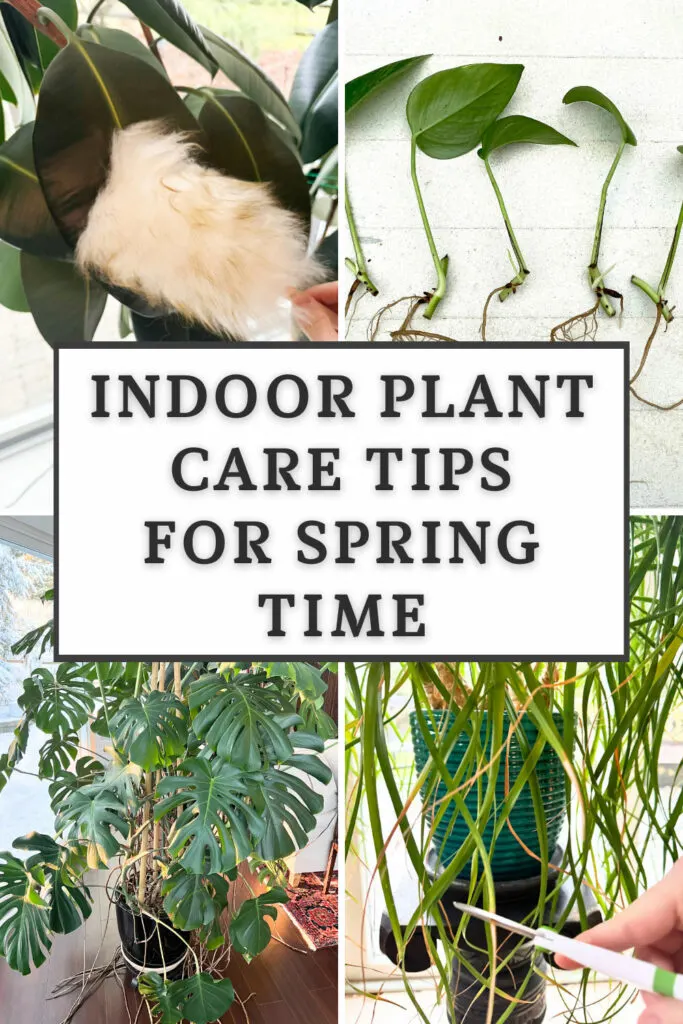
INDOOR PLANT CARE TIPS FOR SPRING
1. Dust off your foliage
Over time, particularly during winter time, a lot of dust can accumulate on the foliage of your houseplants. This is not only unattractive but dirty and dusty leaves also inhibit photosynthesis, so get that dust off!
Here are 3 ways that I’d recommend cleaning your leaves. Pick your favorite!
1. Use a duster
I personally love the lambswool plant duster from Oh Happy Plants. It works really well and helps keep your foliage nice and clean, especially if you don’t want to use any liquids to clean your plants.
Using this lambswool duster not only removes dust, but it also lightly shines your foliage.
The duster works well on all houseplants, but it will be especially effective for broad-leaved houseplants with large leaves such as rubber plants, large-leaved Philodendrons, Monsteras, etc.
Just avoid using it for any plants that have sharp edges where the wool can snag.
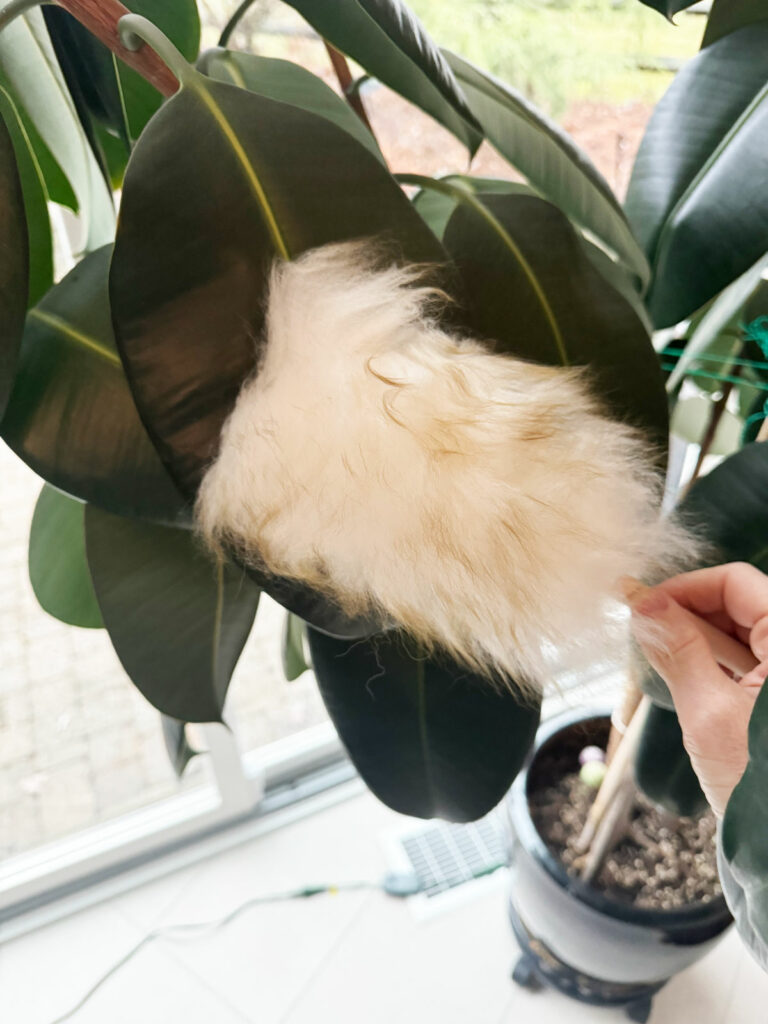
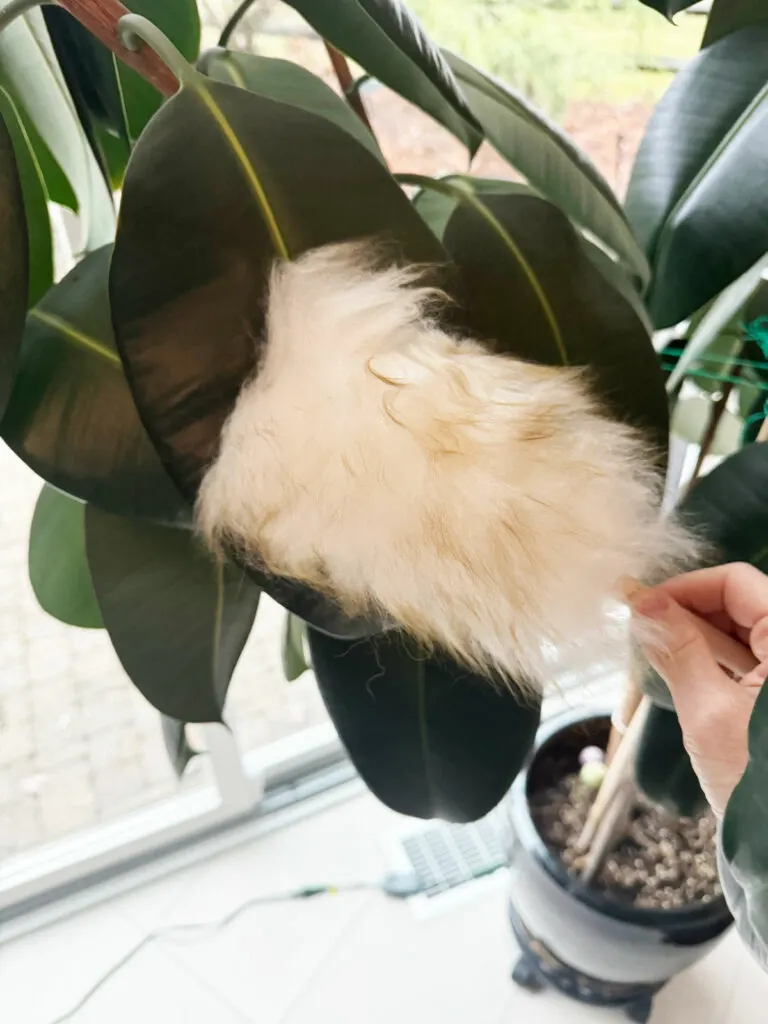
To use, simply place one hand behind the leaf you’re going to clean, and then gently rub the wool duster over the leaf. It will both clean and gently shine your foliage. Using my link for the lambswool plant duster will also automatically give you 10% off at checkout.
If your plant happens to be infested with spider mites or any other pests, simply place the duster in your freezer overnight (you can even place it in a plastic ziploc bag first). This will kill off any pests in the process so you’re not spreading pests to other plants!
2. Wipe leaves with a damp cloth
With this method, simply take a paper towel, or small cloth and run it under water in your sink. Squeeze out excess water, and carefully wipe your leaves.
If there is heavy accumulation of dust, rinse the cloth under water again, wring it out, and keep proceeding until your leaves are nice and clean.
3. Shower your plants
And last but not least, you can take your plants in the shower with you, or if your plant is smaller, you can use the spray attachment in your kitchen sink.
I would just avoid any plants that have hairy leaves because it can cause spotting on the foliage.
You can even use this method weekly. It will help keep your foliage dust-free, as well as help deter pests such as spider mites, mealy bugs, and others.
2. Primp and prune your plants
Spring time is a great time to primp your plants, and also to prune them so that you can encourage new, bushy growth, as well as give you plant material to propagate.
I like to take this time to cut off any yellow or brown lower leaves, and also to trim off any brown tips such as on my ponytail palm.
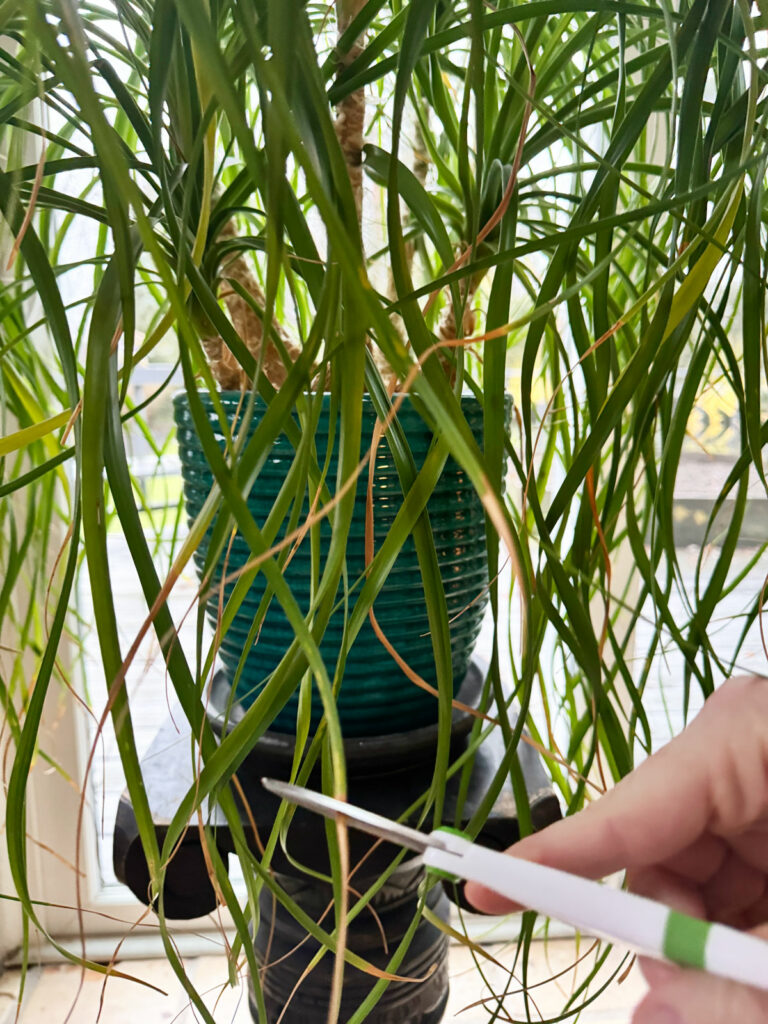
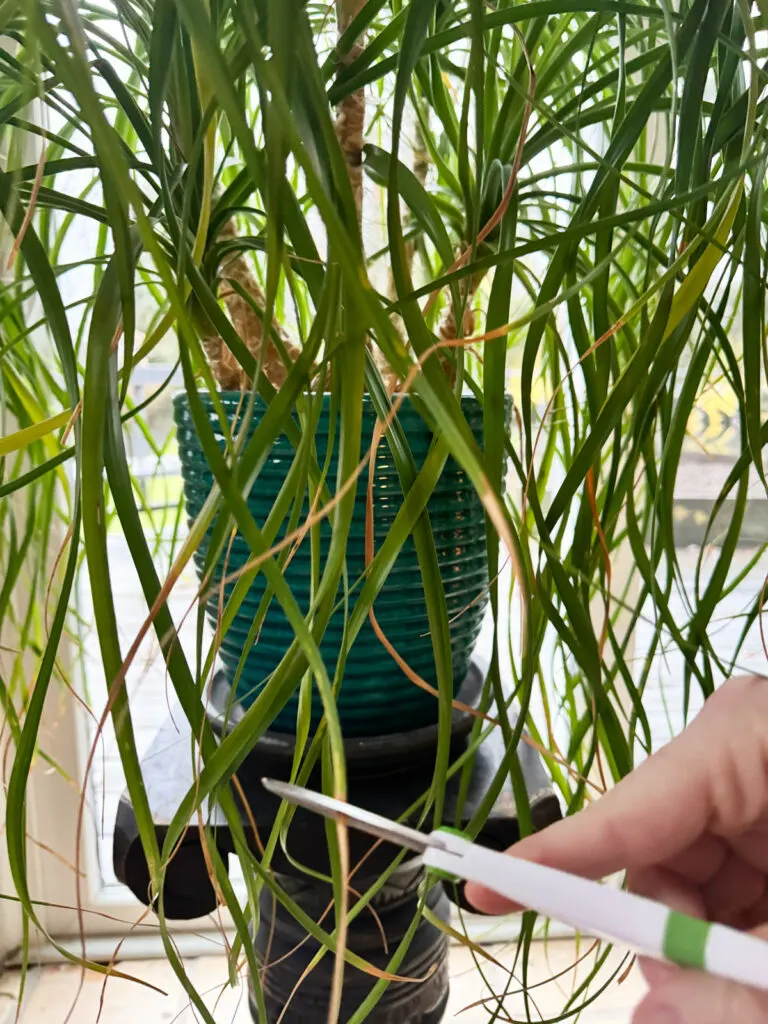
You can also take this time to prune your rubber plant, prune your jade plant, or any other plants that have gotten too tall or leggy.
It will not only keep your plants a more manageable size, but in most cases, you’ll get two branches where you’ve pruned, resulting in a bushier plant. And you can use the trimmings to propagate!
3. Propagate
Although you can propagate at any time of year, Spring is a wonderful time to do so because this is when many plants will start to wake up after winter and start growing again.
Whether you are propagating your variegated Monstera, taking cuttings of your Pothos, or rooting your fiddle leaf fig, you will achieve faster results in the Spring as days are getting longer and your plants are bursting back into growth again.
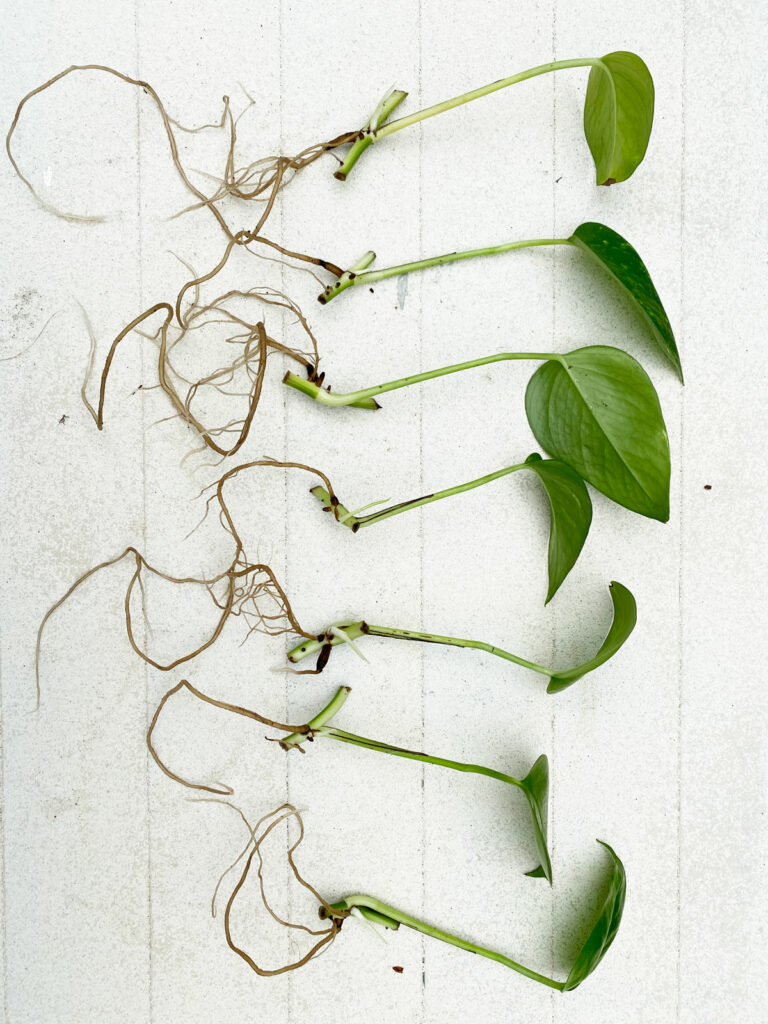
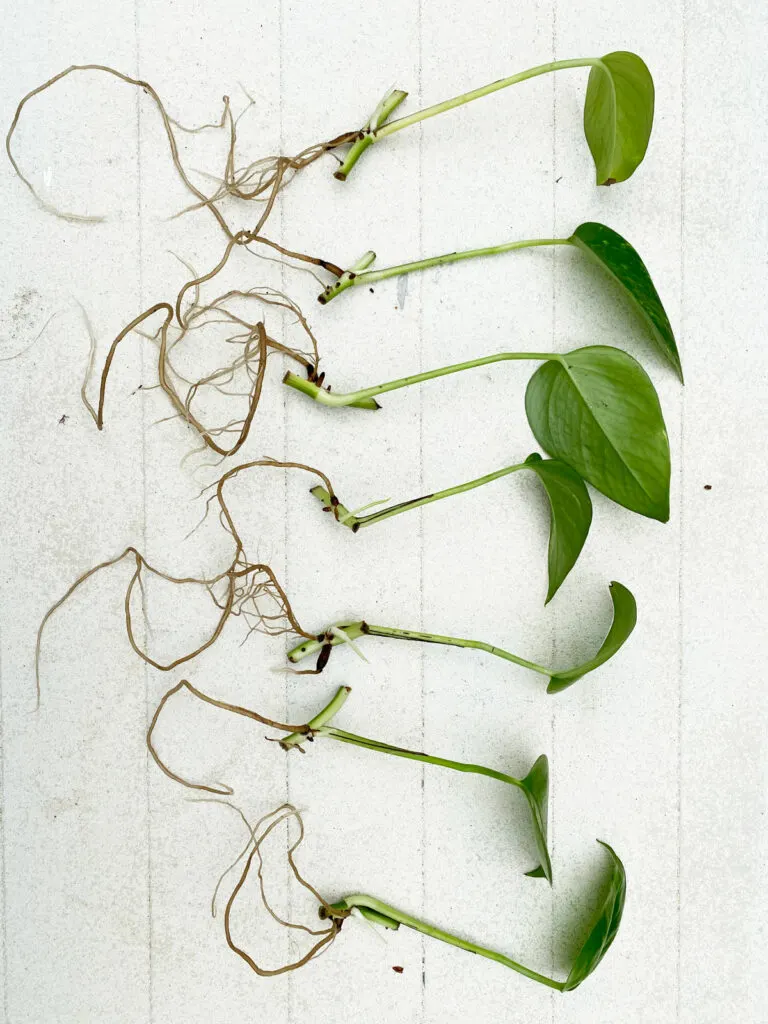
4. Repot your houseplants
Unless you have a repotting emergency, Springtime is a perfect time to repot because your plants are starting back into active growth again and will transition to their bigger pot more quickly.
How do you know if your plant needs to be repotted? Here are some things to look for:
- You may find a lot of roots at the surface of your soil.
- Roots may be visible through the drainage holes, or even coming out of the drainage holes.
- Your plant’s soil may also be drying out a lot more quickly than it used to.
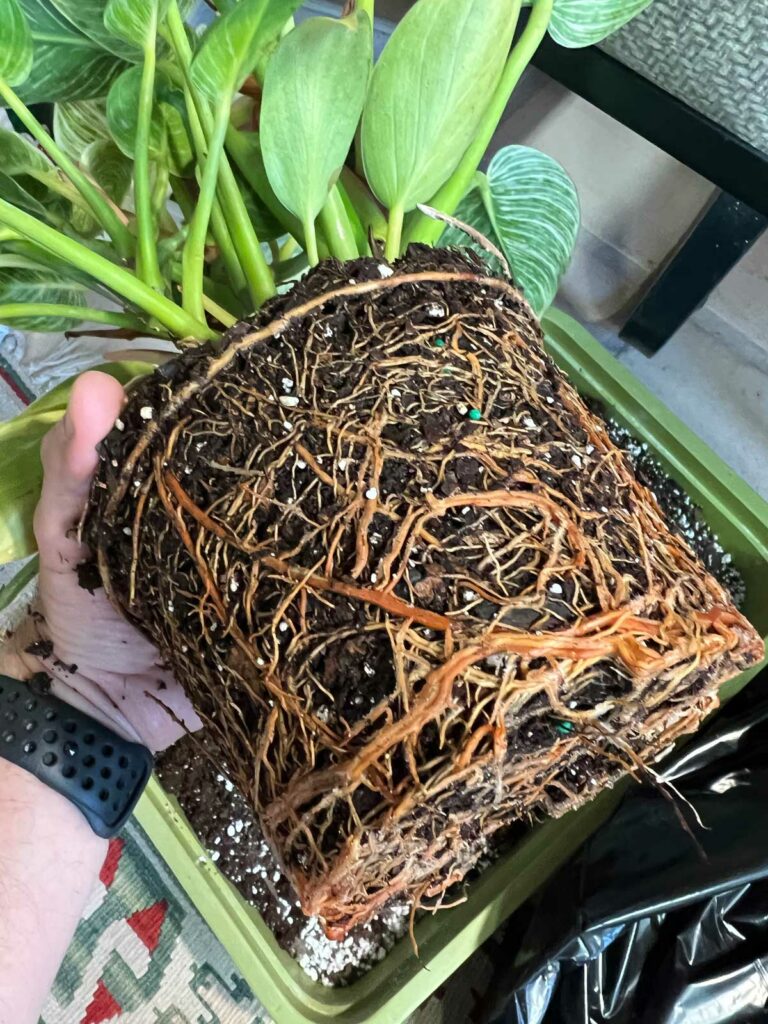
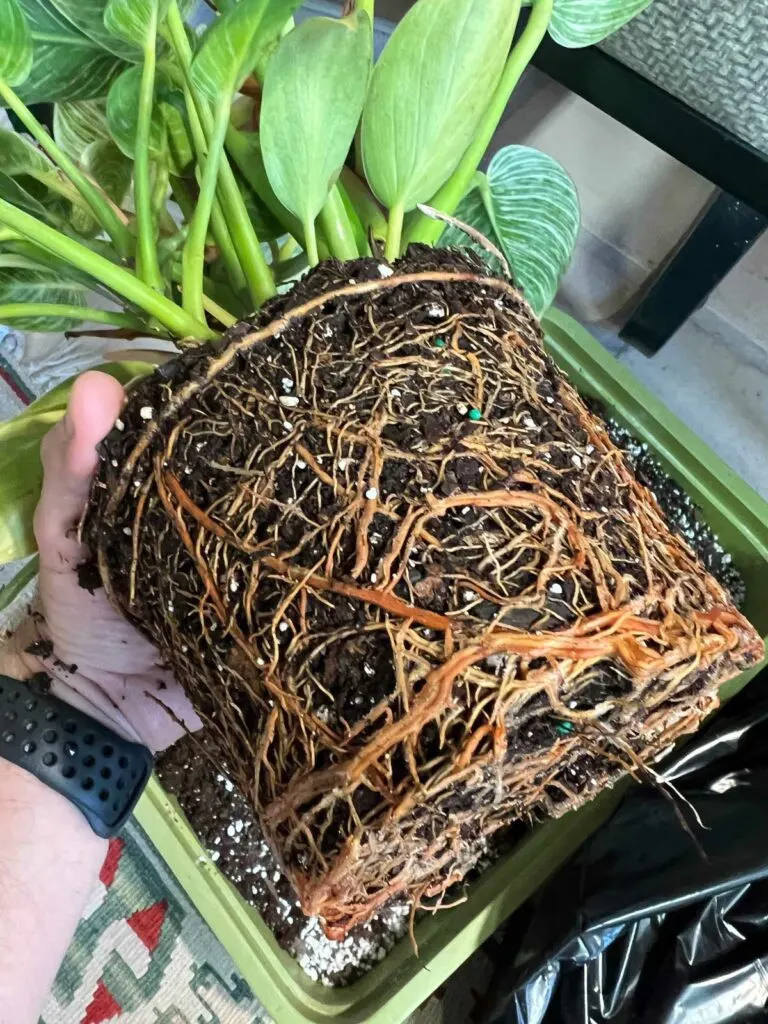
A good rule of thumb in repotting is to only go up 1 pot size. Most plant pots come in two inch increments of the diameter of the pot. For example, if your root bound plant is in a 4-inch diameter pot, only go up to a 6-inch diameter pot.
We do this so that there isn’t too much excess soil. This way, it will dry out in a reasonable amount of time and minimize root rot.
5. Start fertilizing your plants
If you haven’t been regularly fertilizing your plants, Spring is a perfect time to start. Indoor plants in pots will rapidly deplete any nutrients, so it is very helpful to fertilize for healthier and stronger plants.
Check out my guide on how to fertilize houseplants for more information.
Keep in mind that you should not use fertilization to overcome poor cultural conditions. If your plant is sitting in a dark corner and it’s not growing, you should not use fertilizer to fix the issue. Move your plant to better light first!
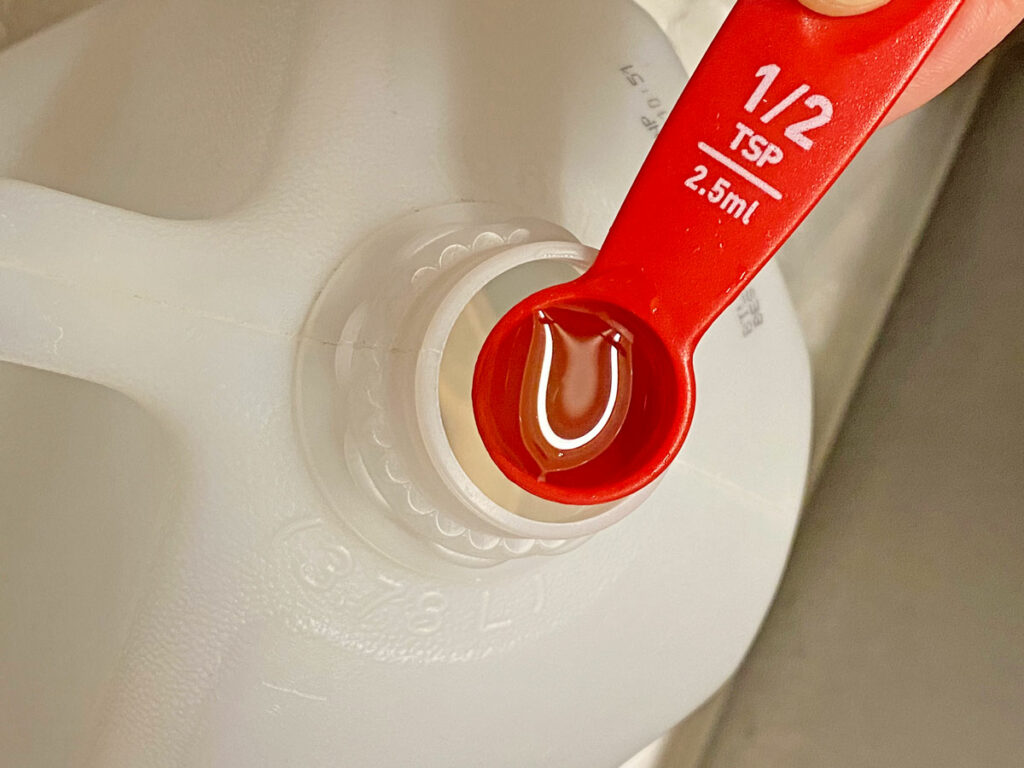
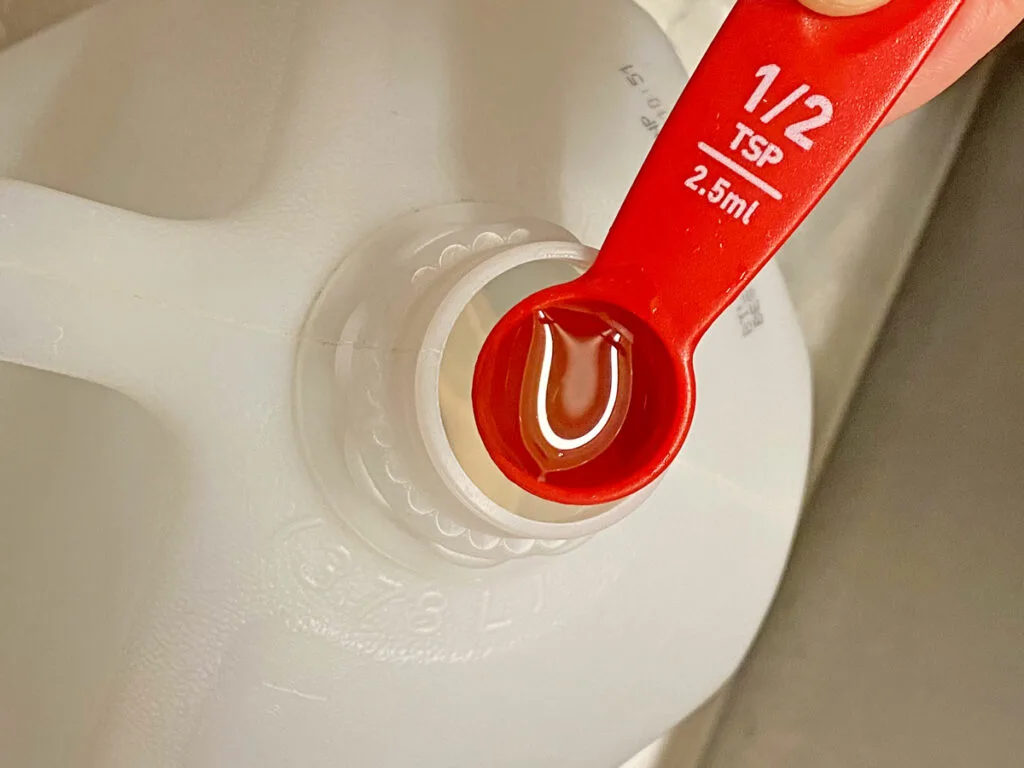
6. Move your plants to a different window if needed
Depending on where you live, many of us have quite dark winters with short days. And with those shorter days, some of us may have moved plants to sunnier windows during the winter time. Direct sun in the winter is much weaker than direct sun in Spring or Summer.
But as days start to get longer in Springtime, you may consider moving your plants back to their original location so that they don’t burn.
7. Move your plants outdoors once warm enough
Lastly, moving your indoor plants outdoors when the weather warms up works wonders. It’s not necessary of course, but if you’ve done this before, you know exactly what I mean!
I like to wait until night time temperatures are consistently above 50°F (10°C).
The increased air circulation, brighter light, warmer temperatures, and rain water are amazing for your plants. Not only that, but the cycling of warmer temperatures during the day, and cooler temperatures at night, often encourage many plants like your moth orchids to bloom.
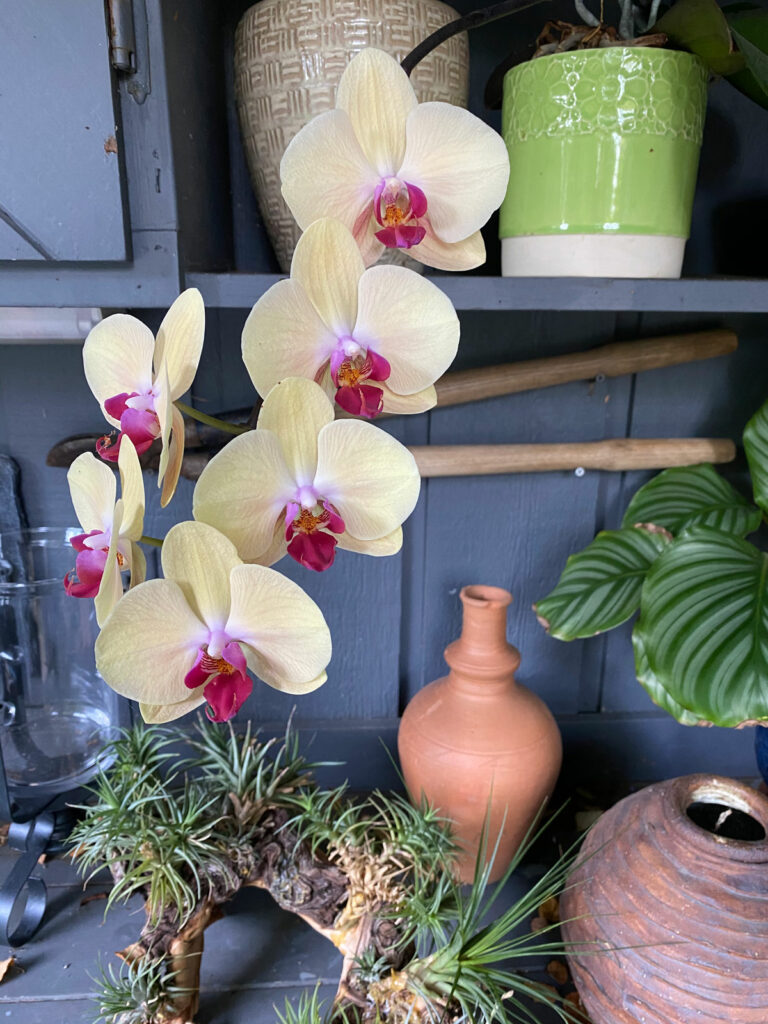
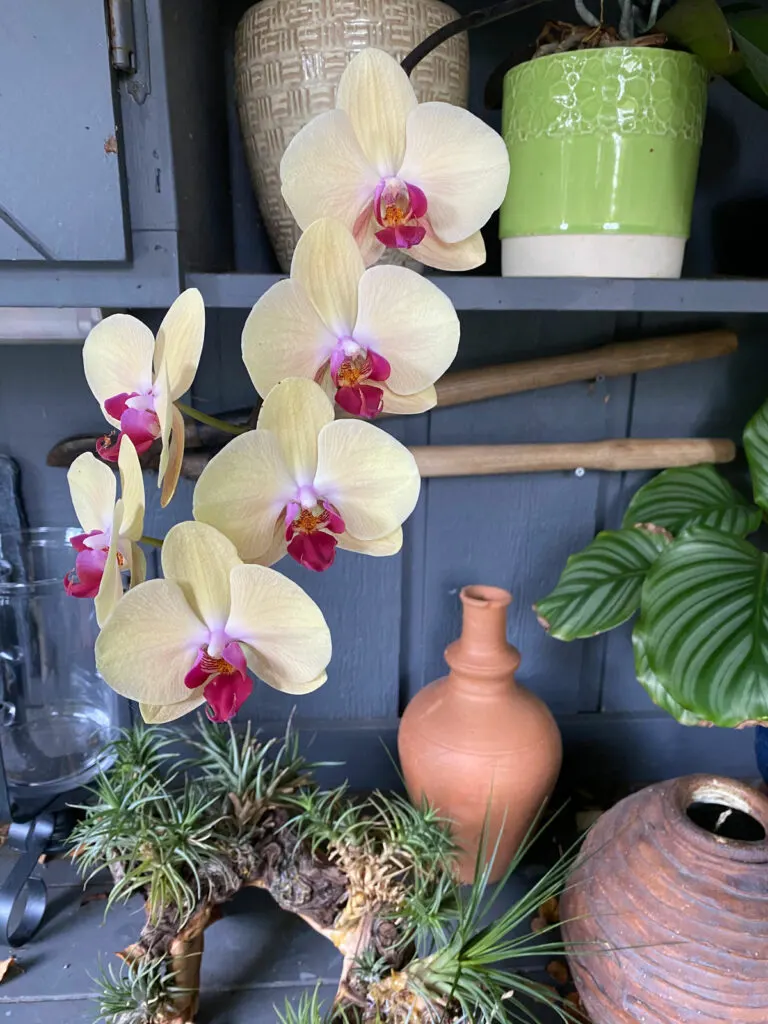
One thing to remember though is that you have to ease the transition from indoors to outdoors carefully so that your plant doesn’t burn. When you move a plant from indoors to outdoors, always place it in FULL shade for a few days first.
This even goes for sun-loving plants like hibiscus, jade plants, and string of pearls. Plants can burn in a matter of hours if the transition is too abrupt. After a few days in the shade outdoors, you can then gradually increase the amount of sun.
If you have a shade-loving plant, then you can just leave it in full shade.
I hope you’ve enjoyed this post on indoor plant care tips for Spring. Do you follow any of these tips? Comment below. I’d love to hear!






